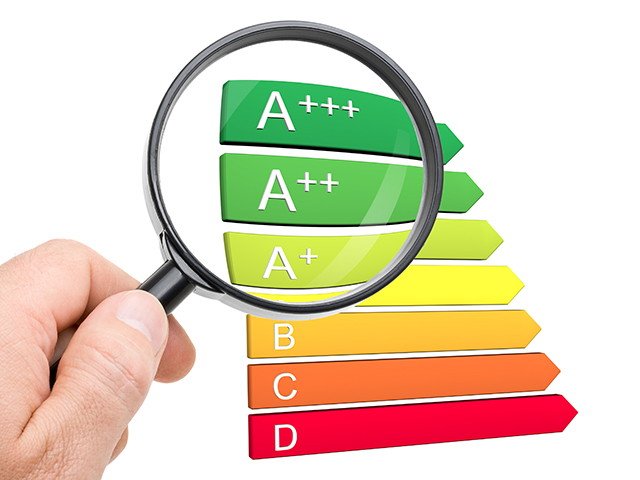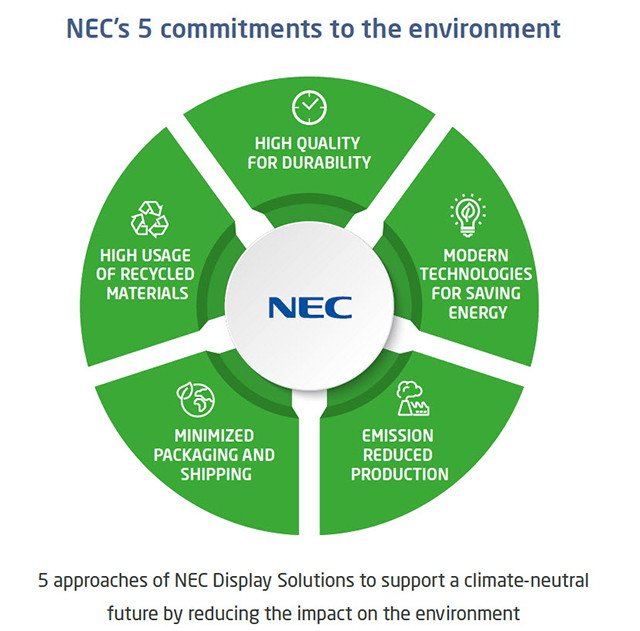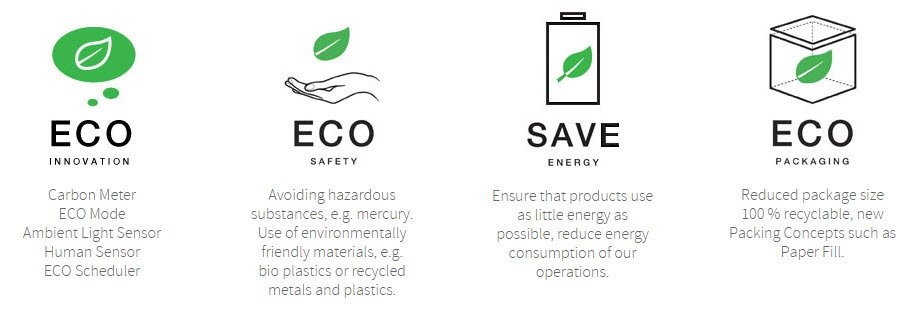What is an Energy Label and why is it changing?

The EU Energy Label gives information about the energy efficiency of a product. We see it on consumer electronic devices from fridges to dishwashers, but it also applies to digital displays.
The label rates products from dark green (most efficient) to red (least efficient). The label also shows total energy consumption and other information relevant to the product - screen size in the case of digital displays.
All this information is useful when comparing products, to help you make an informed purchasing decision.
The label rating is in the process of changing. To avoid confusion, it is important to understand the reasoning for it and to know if you are comparing like for like.
Why is it changing?
The energy labelling system was first introduced in 1994 then expanded in 2004. Implemented to help consumers choose more energy efficient products, it has helped to drive innovation into more energy efficient technologies.
Technology has come a long way since then. Modern technology is highly energy efficient compared to that introduced 20 years ago. Hence the necessity for change. The purpose is to simplify the labelling, but in the short term, it may cause some confusion.
Initially, the rating scale ranged from A (most efficient) to G (least efficient). But as manufacturers introduced products with ever more energy efficiency (the desired result), the most efficient band became over-populated requiring additional bands, A+, A++, and A+++.

The rescaling will bring the rating back to the much simpler A-G scale meaning a product previously rated A+++ will, in the new system, be rated B. The new band A will, for the time being, remain empty to allow for ever more energy efficiency – propelling us all towards meeting our sustainability targets!
The new rating system will take effect on 1 March 2021. There will likely be duplication and/ or delay as the new system comes into play, so make sure you are comparing products across the same scale. Be aware also that there are differences between the EU (incl. Norway and Switzerland) and labelling used in the UK.
Find out more about energy labelling for electronic displays
Why is the change so important?
We must all take action towards a sustainable future; choosing more energy efficient products will help us to reduce the consumption of energy and other natural resources.
This change is necessary to help meet the EU’s energy and climate targets, supporting industrial competitiveness and innovation by promoting better environmental performance of products.
The new scale is not simply a downgrading. The new energy criteria for each of the classes are now far more rigorous. The ‘downgrade’ does not mean that the product in itself is less energy efficient, but that the metric used for calculating the energy class has been substantially changed. The effect of downgrading is very dramatic for electronic displays, where the majority of premium models will be downgraded to the bottom classes (F and G).

NEC achieves recyclability rates averaging 97.4% for its Large Format Displays, almost entirely recyclable.
New ecodesign rules also apply to electronic displays which set mandatory minimum standards for their energy efficiency including a maximum allowable energy consumption when in standby mode. An important element of the more stringent ecodesign rules covers reparability and recyclability.
Spare parts must be more easily replaceable with repair and maintenance information available for end users and professional repairers as appropriate.
The new scaling system also takes into account the screen area. The new labels will show the efficiency of a product when it displays content in HDR, as it can consume twice as much energy as other settings. In addition, the label will show information on the diagonal size of the display and the resolution, so that consumers can better compare similar displays.
Why might the datasheet show a different energy consumption?
The calculation of the energy consumption shown on the new Energy Label has a very specific criteria defined by the EU certification process. The wattage is calculated at a certain level of brightness and with High Dynamic Range (HDR) enabled which boosts the backlight to deepen the contrast.

The power consumption quoted on the datasheet, however, will be the typical wattage at the default setting for shipping. We ship our displays in the most eco-friendly way possible, at a level of brightness suitable for regular environmental conditions.
Unless a display is operating in an area of high ambient light, the highest brightness setting is not required in order to present content with eye-pleasing readability. It is our experience that most end users do not adjust the settings upon installation.
Also bear in mind that the Energy Label quotes energy consumption based on 1000 hours compared to the usage quoted on the datasheet which may use a different measured time.
How can I reduce my energy consumption?
The Energy Label tells you how much electricity the product uses in kilowatt hours (kWh) whist operating at pre-determined functionality settings. The lower the figure the less energy it will use, hence saving more money on energy bills. Actual savings will, of course, depend on how you use the product and how much you pay for your electricity.
To minimise actual energy consumption, electronic displays will offer an array of eco features. Put these features into action to reduce your total cost of ownership.
Look out for these features on your NEC Display:

Eco mode – our products are shipped in lower brightness mode meaning they consume less power.
Ambient light sensor – brightness levels are optimised according to the ambient light conditions making the content easily readable whilst minimizing power usage.
Human sensor – the display powers up when it detects a person in front of it, and powers down when they move away.
On-off scheduling – programmable settings to power up/down at pre-determined times.
Savings calculator – a Total Cost of Ownership (TCO) calculator to estimate and compare typical running costs helping you to quantify your carbon footprint.
NEC Quality – it is important to note that sustainability is strongly influenced by a product’s lifecycle. Using high quality professional components and stringent Japanese design and manufacturing processes, NEC delivers products with exceptionally high reliability, meaning you will not have to repair or replace your assets any time soon.
This whitepaper identifies how we help businesses be more environmentally friendly, by increasing efficiency and saving costs.
How do NEC’s environmentally friendly solutions not only benefit the planet, but also your business?
What do the other labels mean?
Seen on product packaging and the datasheet, there are many environmental and safety directives that manufacturers of electronic equipment must adhere to. Here’s a selection of the most relevant for electronic display technology:
Energy Star is used on office equipment and shows that a product has achieved energy efficiency standards set by the EU.
ErP compliant relates to EU defined requirements for the environmentally sound design of energy consuming products.
WEEE stands for Waste Electrical and Electronic Equipment, compliance ensures that correct recycling and disposal procedures are adhered to.
RoHS restricts the use of certain hazardous materials found in electrical and electronic products.
We go above and beyond compliance to these standards, developing innovative solutions that are sustainably produced, provide long lasting reliability, save energy and are highly recyclable.

